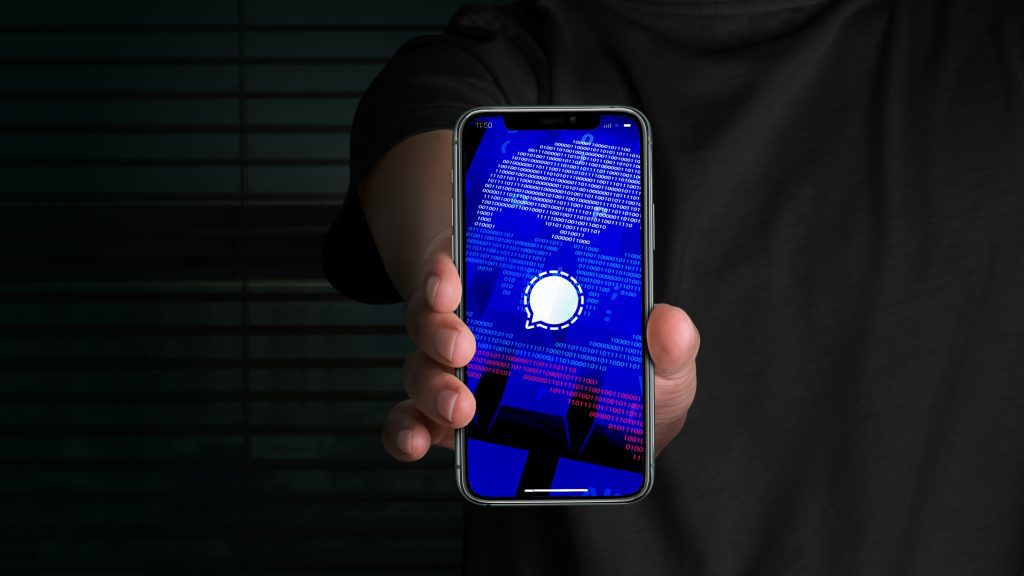
On March 18, a leaked Pentagon memo exposed Russian hackers exploiting a Signal security vulnerability to spy on private chats by hijacking the app’s “linked devices” feature, further fueling already ignited geopolitical tensions.
The hacks on Signal app started with hackers manipulating victims into scanning QR codes and secretly syncing their chats to hacker-controlled devices. Google’s Threat Intelligence Group learned that malicious QR codes can be employed to mislead users into linking their accounts without them even realizing it.
“If it works, subsequent messages will be sent synchronously to the victim and the attacker,” Google said, highlighting that the Signal security vulnerability is likely to grow, particularly in relation to the conflict in Ukraine and other hotspots around the world.
Signal’s encryption remains unscathed, but the exploit bypasses protections via device authorization.
Signal Security Breach to National Security
The memo followed top Trump administration officials accidentally adding a reporter to a private Signal group chat debating the logistics of military strikes on Yemen.
After The Atlantic’s article was released exposing the mishap by the top administrative officials, Defense Secretary Pete Hegseth claimed that “nobody was texting war plans,” while in parallel, the Signal security communication team expressed that it wasn’t “aware of any vulnerabilities or supposed ones that we haven’t addressed publicly.”
So, is signal secure communication?
According to the Pentagon’s advisory memo, obtained by PCMag, Russian state-sponsored hackers attempted to infiltrate Signal conversations through an exploitation in devices security – instead of the platform’s encryption itself.
Signal is pretty state-of-the-art in secure digital communication, or at least that’s what the public – and Trump’s Vice President and Secretary of State, among some of the highest-ranking officials – thought so. But the latest chat including White House and Pentagon staff is demonstrating how informal messaging channels’ use for classified deliberations, such as Signal, is not a warning for US officials only, but also the public.
Experts have cautioned that reliance on third-party apps for secure communication, especially on personal devices, is folly and indicative of deeper shortcomings in US cyber policy, especially when user behavior, device security, or metadata exposure come into play.
Commentators warn that mismanagement of encrypted tools could further widen the cybersecurity gap between China and the US. Unlike the US, Chinese officials are not keen to employ electronic communication for sensitive matters and prefer secure, face-to-face meetings.
A decade ago, the CIA lost valuable information in China due to underestimating Beijing’s capacity to hack. With the Trump administration cutting back on cybersecurity spending and surveillance, critics fear that America is falling behind at the worst possible time.
“If there was no classified material, share it with the committee,” Senator Mark Warner stated, demanding transparency at a hearing on Capitol Hill. “You can’t have it both ways.”
A Bigger Wake-Up Call than the Signal Leak
The Signal security issues is exposing the platform’s security, and it just may be its Achilles’ heel, even though its encryptions still run strong, its over-reliance on user-controlled security is what’s making it susceptible to human error, and consequently, targeted attacks.
The Signal security issue is not just a careless example of app use, it’s a wake-up call for the fact that technology, as powerful as it is, is only as secure as the people who are using it.
Recent observations have indicated that cybercriminals are increasingly targeting encrypted communication platforms at a staggering pace, exploiting technology vulnerabilities and human errors.
Inside Telecom provides you with an extensive list of content covering all aspects of the tech industry. Keep an eye on our Cybersecurity sections to stay informed and up-to-date with our daily articles.